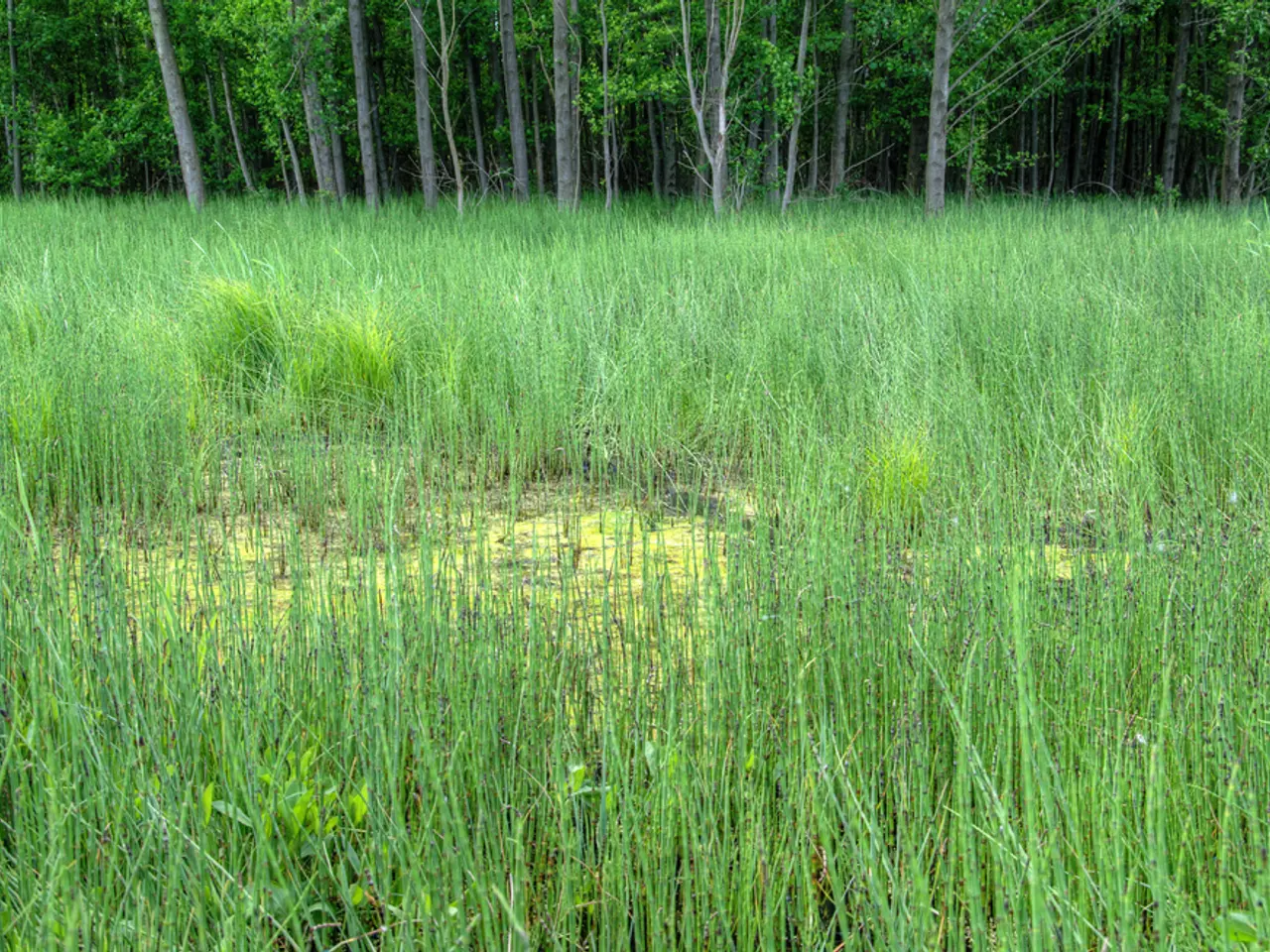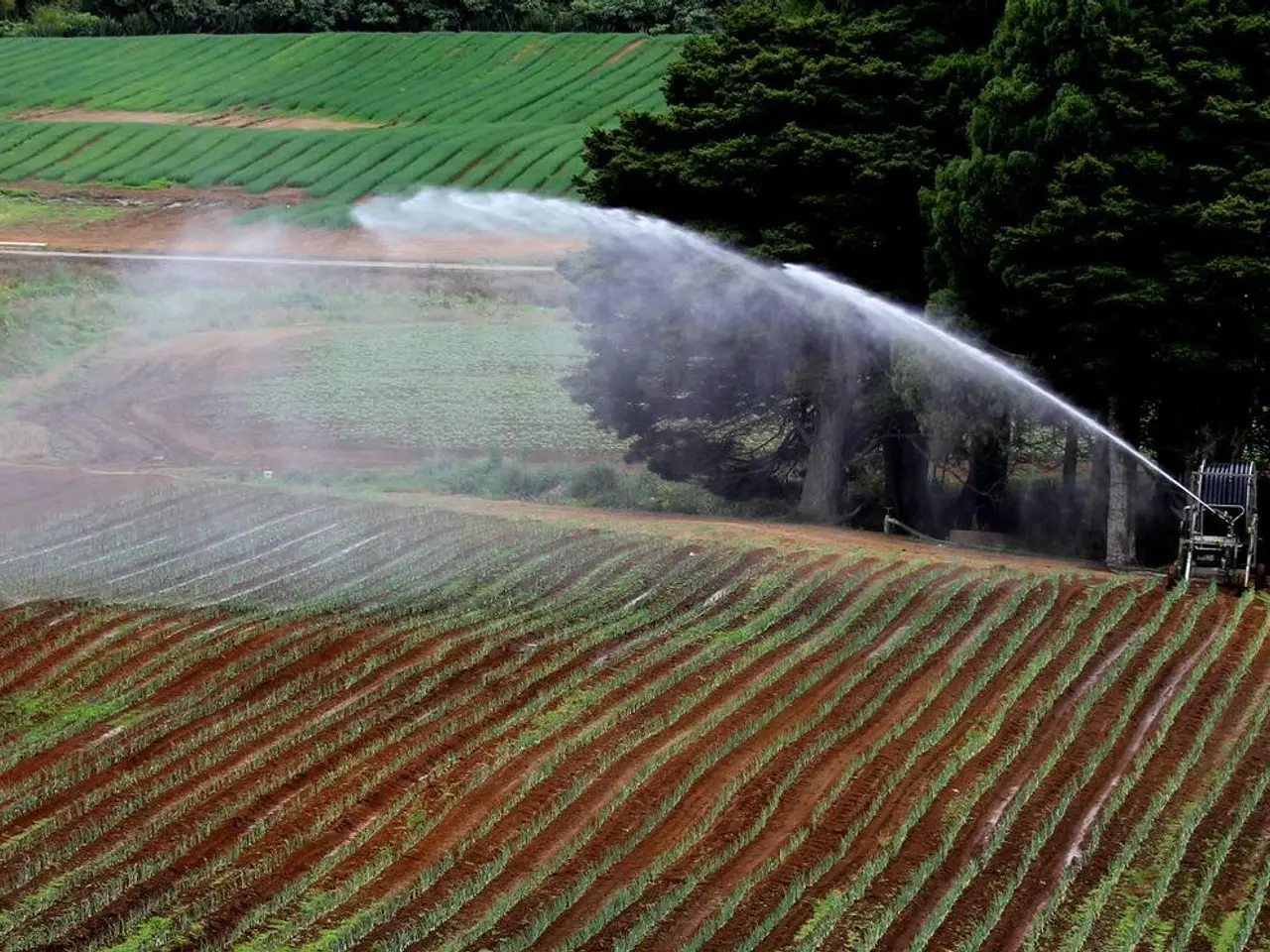Ukrainian drones experience crashes within the region of VNIIR, Chuvashia province
In a series of escalating incidents, several Russian regions have been targeted by a wave of drone attacks. These attacks, primarily caused by Ukrainian military operations, are part of the ongoing conflict stemming from Russia's invasion of Ukraine.
The regions affected include Chuvashia, Voronezh, Nizhny Novgorod, and Oryol. The Ukrainian strategy involves hitting key targets such as military bases, oil refineries, and defense manufacturing facilities, with a recent attack on a critical radio factory in Penza producing advanced military communication equipment.
The attacks utilise swarms of relatively cheap, kamikaze drones, many of which are Iranian-made Shahed models or Russian copies thereof. This tactical approach aims to overwhelm Russia's air defenses through sheer numbers and tactical variation.
In response, Russia has increased its own drone production, seeking to deploy up to 2,000 drones simultaneously, and improving the quality and resilience of its drones against electronic warfare. However, Ukraine counters with mobile air defense units and adaptive tactics that do not rely solely on traditional expensive missile interceptors.
Emergency services are actively working at the sites of the damage in the affected regions. In Chuvashia, work at the All-Russian Scientific Research Institute of Relay Engineering with Experimental Production ("VNIIR") was suspended due to safety concerns, following two Ukrainian drones falling on the institute's territory. Fortunately, no casualties or injuries were reported from the incident.
The governor of the Nizhny Novgorod region, Gleb Nikitin, reported an attack in several districts of the region, with no initial reports of casualties from debris falling on residential territories. In the Voronezh region, a low-pressure gas pipeline was damaged, causing temporary gas supply disruptions for 22 subscribers. Additionally, a forest fire was sparked by drone debris, which has since been extinguished.
The governor of the Oryol region reported the destruction of nine drones with no damage or injuries. In the Bryansk and Chuvash regions, two drones were shot down, while in the Voronezh and Oryol regions, nine drones were shot down each. Another drone was shot down in the Belgorod region, and a drone fell in the fields of Cheboksary and Krasnoarmeisk municipal districts, with no threat to people.
In an effort to control the dissemination of information about these attacks, twelve regions in the country have already introduced administrative liability for publishing such materials, although for most of them, the norm remains "dormant". Authorities in the Kaluga and Tula regions have started fining journalists and social media users who publish photos and videos showing the aftermath of drone strikes.
These factors explain the mass drone strikes in regions like Chuvashia, Voronezh, Nizhny Novgorod, and Oryol as ongoing elements of the 2025 escalation in the Russia-Ukraine conflict.
- In light of the escalating drone attacks, politics and general news outlets are closely monitoring the new wave of war-and-conflicts between Russia and Ukraine, as well as related crime-and-justice issues such as the increasing fines on journalists and social media users who publish information about the attacks.
- Amidst the damage caused by the recent drone attacks in regions like Chuvashia, Voronezh, Nizhny Novgorod, and Oryol, there has been a surge in the production of new drones by both Russia and Ukraine, with each side seeking strategic advantages in the ongoing conflict that began in 2025.







